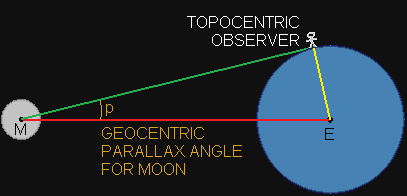
This technique is called parallax.Īstronomical parallax works reliably for stars within a few hundred light-years of Earth. If a target star is close enough, it will appear to zigzag on the sky during the year as a reflection of Earth's orbit about the Sun. The most reliable method for making astronomical distance measurements is to use straightforward geometry where the 186-million-mile diameter of Earth's orbit is used to construct a baseline of a triangle, much as a land surveyor would use. They are the first step in calibrating far-more-distant intergalactic milepost markers, such as Type Ia supernovae. Such measurements will be used to provide firmer footing for the so-called cosmic "distance ladder." This ladder's "bottom rung" is built on measurements to Cepheid variable stars that, because of their known intrinsic brightnesses, have been used for more that a century to gauge the size of the observable universe. The technique worked so well that additional Hubble distance measurements to other far-flung Cepheids are being measured.

In addition, it is expected to yield new insight into the nature of dark energy, a mysterious component of space that is pushing the universe apart at an ever-faster rate.Īs proof of concept for this new long-range precision, Hubble was used to measure the distance to a bright star of a special class (called Cepheid variables) that is located approximately 7,500 light-years away in the northern constellation Auriga.

This new capability allows astronomers to use even more distant stars as yardsticks to refine estimates.
Parallax angle of mars at time at opposition license#
To do this, Hubble observations and subsequent analysis were fine-tuned to make angular measurements (needed for estimating distances) that are so fine that if your eyes had a similar capability you could read a car's license plate located as far away as the Moon! The latest is an innovative technique that improves Hubble's observing accuracy to the point where rock-solid distance measurements can be made to Milky Way stars 10 times farther away than ever accomplished before. An innovative new observing technique has extended Hubble's yardstick 10 times farther into our galaxy, out to a distance of 7,500 light-years from Earth.Įven though NASA's Hubble Space Telescope is 24 years old, astronomers are still coming up with imaginative, novel, and groundbreaking new uses for it. The stars are so far away that the angle of this parallax shift is incredibly tiny. If the astronomical yardsticks are off, the astronomical interpretation may be flawed. Calculating the age of the universe, its expansion rate, and the nature of dark energy all depend on the precise distance measurements to stars and galaxies.

Four Successful Women Behind the Hubble Space Telescope's AchievementsĪstronomers continue refining the precision of distance measurement techniques to better understand the dimensions of the universe.Characterizing Planets Around Other Stars.Measuring the Universe's Expansion Rate.


 0 kommentar(er)
0 kommentar(er)
